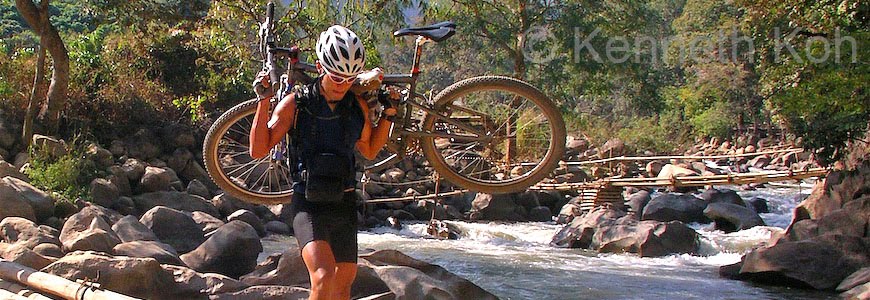 |
| Trekking in Nepal with a Nikon D300, 18-200mm lens |
First off, what adventure are you participating in? Hiking, mountaineering and adventure travel lend themselves well to still photography. The action is slower, and you generally have both hands free to play around with a camera and have some time to compose the shot. Biking, skiing and kayaking lend themselves better to video photography. Not only are your hands busy doing something else, but the action is faster in these sports and capturing the movement is a big part of showcasing the activity. Sometimes, a combination of the still and video photography works well, and these days, many cameras do both. Here are my picks:
DSLRs
My top picks for a DSLR would be the Nikon D7000 (or D3100 if you want to go lighter or cheaper). There are a number of other DSLRs that would do the job too, like the Canon 7D or 550D. It's just that I'm more familiar with the Nikon brand. I wouldn't get too hung up on the brand of camera. If you like the way it feels, looks and handles, it will work.
 |
| Last Light at Manvar. Taken with a Nikon D300, 18-200mm lens |
I would pair the body with an 18-200mm lens first and then perhaps a 12-24mm (or 10-24mm) lens. Sometimes, I'll add a 50mm F/1.4 for shallow depth of field shots. I'm always on the the search for better quality, but time and again, I come back to the 18-200mm as the basic lens for adventure shooting. Why? When you're tired, you don't have to move around a lot to get a shot; or sometimes you just can't, as when you are roped-in. The 18-200mm gives you a wide focal length range without having to think about changing lenses, or cleaning a bunch of lenses, or carrying a bunch of lenses.
Compacts
Sometimes, the weight of a DSLR is too much. Then, I'd take a compact. My current choice for a compact would be the Panasonic LX5
 |
| Mountaineering with the Panasonic LX3 Compact Camera |
Video Cam
I've limited experience with video, but I'd like to do more. Apple's iMovie make combining still slideshows and video a breeze, and it's easy to upload onto a video sharing site for friends and family to see.
 |
| GoPro HD Hero mounted on my mountain bike |
My choice for an adventure video cam is the GoPro HD Hero
Here's a slideshow/video presentation I made with the GoPro HD Heroof a recent mountain bike race:
Next up: Part II, Techniques

No comments:
Post a Comment